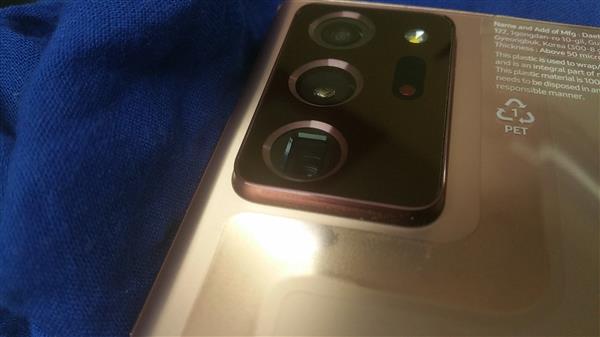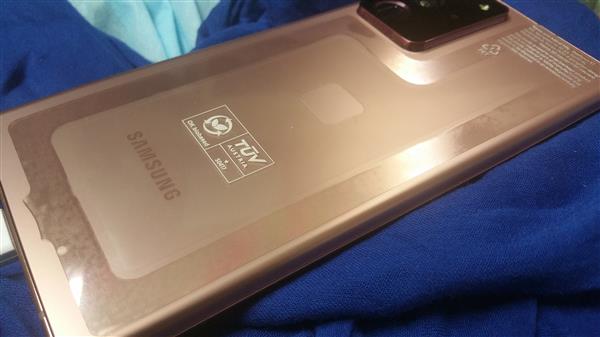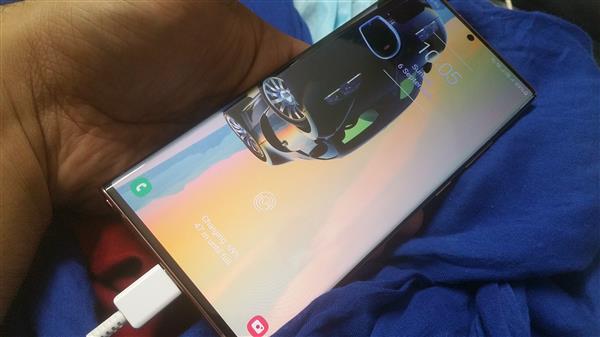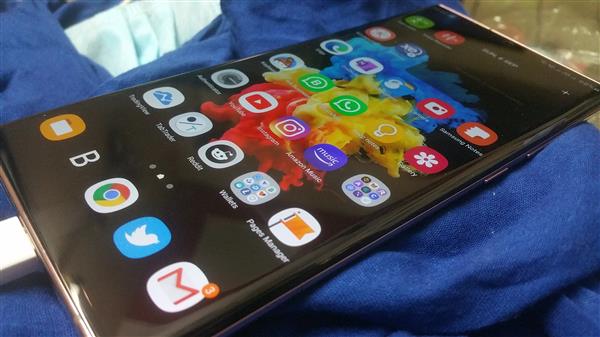
Samsung Galaxy Note 20 Ultra Exynos variant is sold in Europe and Asia. Exynos processor is made by Samsung and this is review of this very variant.
Note 20 Ultra is powered by Samsung Exynos 990 processor that is also being used in S20 series and last year’s Galaxy Note 10/10+. There is absolutely nothing that we could do to slow it down. Yes, if you run benchmarks of it alongside Qualcomm Snapdragon 865+, you will see that it is slower by couple of seconds, but are you going to notice that in real life?
Plus, the Note 20 Ultra comes with double the storage compared to Snapdragon variant and I would gladly take doubled storage and accept 0.05 second lag.
The Samsung Note series, which was born in 2011, has made a first demonstration for Android manufacturers. Later, Huawei’s P/Mate series dual flagships, and Xiaomi’s simple digital/Note dual flagship strategic ideas are more or less affected by its influences.
Galaxy Note 20 Ultra inherits Founder’s family appearance language and uses the top-of-the-line screen supplied by its own family’s SDI. The image part basically follows the scheme of the S series super-large flagship Galaxy S20 Ultra, except that the IMX586 at the telephoto end is replaced by a 12 million pixel. Lens.

Of course, S-Pen is still the irreplaceable core competitiveness of the Samsung Note series. After the enhancement and upgrade of this generation of pens, it supports more gestures and has more functional gameplay. Most importantly, this pen can now achieve a delay of 9ms, which has reached the limit level unparalleled in the mobile phone industry, comparable to the Apple Pencil of the iPad.
The industrial design and workmanship of the Samsung Galaxy Note series have always been impeccable, and it has always represented the pinnacle of the industry. The S series has always maintained a round and relatively small shape, while the Galaxy Note 20 Ultra tends to adopt an approximate right-angle transition design for the curved screen. The tough, square and even angular visual impact is very strong.

The Samsung Galaxy Note 20 Ultra’s 6.9-inch display is covered with curved glass, and is integrated with the rounded middle frame and the curved glass back panel on the back. It hardly feels any sense of separation or even the presence of the middle frame.
The back of the 208g fuselage is made of AG glass and has a matte frosted texture. The color in our hands is misty gold, while the black and white colors are mirrored glass.
The camera module on the back of the fuselage has been completely renewed. The periscope square telephoto lens is hidden in the circular aperture and integrated with other lenses.

Samsung Galaxy Note 20 Ultra does not retain the 3.5mm headphone jack. At the bottom of the fuselage, there are microphones, USB-C ports, speakers and S-Pen slots.
Samsung Galaxy Note 20 Ultra uses a 6.9″ WQHD+ resolution + adaptive 120Hz refresh rate (only enabled when the resolution is FHD+ and below) curved screen.
According to Samsung, the brightness this time is 25% higher than the previous one.
The brightness of the previous game has reached the technical limit at the time. We don’t know how to achieve such an improvement, and there is no public information to understand. The guess is that it should be replaced by a new type of luminescent material.
Because in the era of E2 luminescent material dominance, mobile phone screens can achieve global 600nits and local 1000nits. Later, E3 luminescent materials support a global brightness of 800nits and a local brightness of 1200nits.
And this time on the Samsung Galaxy Note 20 Ultra, the highest brightness specification of 1500nits was achieved. According to the information we have learned, it is difficult to achieve it through other means if it is not through the transformation of luminescent materials.
It is worth noting that this screen of Samsung Galaxy Note Ultra cannot open the 120Hz refresh rate at WQHD+ resolution, and can only achieve 120Hz high refresh rate in FHD+ resolution and below.

However, for the screen of the Galaxy Note 20 Ultra, DisplayMate, an authoritative screen testing organization, has done a detailed quantitative test. It is not surprising that it gave an evaluation of “Excellent A+”, which is called a “textbook-level display”. Multiple records have been made. The test report is more complicated, we can briefly understand it next:
The highest absolute color accuracy (0.5 JNCD), the smallest color accuracy and intensity level change (0.4 JNCD), the smallest image contrast and intensity level change (0.04 Gamma), the smallest peak brightness change (5%), OLED smartphones The highest full-screen brightness (1037nit), the highest peak brightness (1609nit), the largest primary color gamut (108% DCI-P3 and 135% sRGB / Rec.709), the highest contrast, the lowest screen reflectivity (4.4%), It has the highest contrast ratio under ambient light (100% APL is 236, peak brightness is 366).
Camera
The main camera of the Samsung Galaxy Note 20 Ultra continues from the S5KHM1 on the Samsung Galaxy S20 Ultra, which is 108 million pixel main camera.
The ultra-wide-angle lens is also the same 12-megapixel S5K2L3 as the S20 Ultra; but the periscope telephoto lens is replaced with a 12-megapixel S5K3M5, which supports 5x optical zoom and up to 50x digital zoom, which is different from the S20 Ultra’s IMX586.
In addition to the three image sensors, we also noticed another obvious change is that the Samsung Galaxy Note 20 Ultra does not have a ToF lens that has been passed down for many years. Instead, a laser focus sensor is added, which is probably to solve the relatively weak PDAF of the HM1 sensor. performance.
Although the S Pen occupies a lot of internal space in the fuselage, the Samsung Galaxy Note 20 Ultra did not sacrifice battery capacity for this. It is equipped with the largest 4500mAh battery in the Note series so far, and is equipped with a maximum 25W fast charge. Since we used a bare metal for the evaluation, here will only bring you a battery life test.
The Samsung Galaxy Note series, which has been sitting firmly in the position of the Android machine king, always attracts the most attention, but this is not because of how much material it uses and how feverish the hardware configuration it uses, but also because of Samsung’s unique innovation capabilities, from appearance design to functional features. , And then to the iconic S Pen, it is not comparable to stacking materials and paying tribute to each other.
This generation of Galaxy Note 20 Ultra satisfies all our hopes for the Android phone king: irreplaceable industrial design, top-notch imaging system and current extreme performance, beautiful and reasonably curved hyperboloid side screen, more powerful and smooth Exclusive S Pen, IP68 waterproof and dustproof body.
Among them, the most impressive is the curved screen with 6.9″ WQHD+ resolution + adaptive 120Hz refresh rate, which refreshes our understanding of AMOLED display panels. It uses a technology that we still don’t know about, extremely It may be an innovative luminescent material, achieving the highest brightness specification of 1500nits, far exceeding the local peak brightness of 1200nits of E3 luminescent material.
On Samsung Galaxy Note Ultra, we also saw the application of LTPO (low temperature polycrystalline oxide) panel and the addition of “adaptive refresh rate” technology for the first time. The idea of energy consumption is a reliable idea for mobile phones to save energy in the 5G era.
Although many places use the same solution as the Galaxy S20 Ultra, such as the same processor, memory, basically the same camera module, etc., the Galaxy Note 20 Ultra is more like a master than the S series, and inherits the Galaxy on the one hand. S20 Ulitra has many highlights of its popularity, but on the other hand, it has fully demonstrated its own characteristics and reached its peak.
